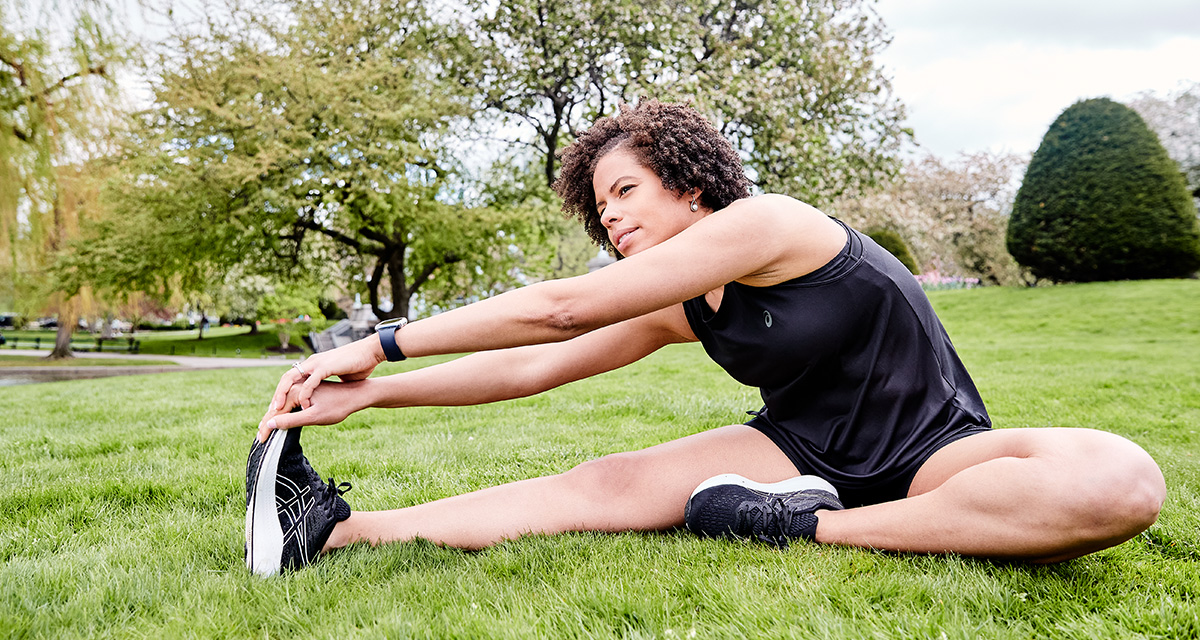The 10K is a popular race distance and for good reason. From beginners looking to push themselves to a new distance to experienced runners seeking a PR, the 10K offers a challenge for every run. Most likely you have some questions about how to train for a 10K and how to run a 10K race to your best – and we’ve got answers to your most common 10K training questions.
How far is a 10K race?
The “K” stands for kilometers–so a 10K is ten kilometers. Ten kilometers is 6.2 miles. A 10K is twice the distance of a 5K race.
How many weeks do I need to train for a 10K?
Your base level of fitness affects how many weeks you should spend training for a 10K. Your goals will also affect the length of your training program.
If you are a beginner and wish to complete a 10K, you will want to spend several months building up to the distance. First, spend six to eight weeks on walk-run training to adapt your body to the impact and motion patterns of running. Then, spend 12 weeks building up to the 5K distance. After that, you will want to spend another 12 weeks increasing your mileage for the 10K race.
A 12-week training plan will prepare you for a 10K race if you have been running for a few months. More experienced runners who can cover the distance and want to run a faster 10K should spend six to ten weeks preparing for their 10K race.
Read more: How much time do I need to train for a race?
How far should my longest run be before a 10K?
How long should you spend training to run 6.2 miles? The answer depends on your current fitness level, how far you can currently run, and whether your goal is to finish the 10K or run faster.
Absolute beginners can cover the 10K distance in training, but they do not have to. If you develop enough endurance, you will prepare your body to cover 6.2 miles. For a beginner, you want to be able to run at least five miles before your 10K race.
More experienced runners will likely run more than 6.2 miles in their training. Intermediate runners will complete long runs of 7-10 miles. Advanced runners will complete long runs of 10-14 miles to optimize their endurance.
How do I prepare for my first 10K?
When you prepare for your first 10K, the primary goal is to develop enough endurance to cover 6.2 miles. For many runners, a 10K means you need to be able to run for an hour or longer.
In order to build your endurance, you will want to increase both your overall weekly mileage and your longest run of the week. You should increase your weekly mileage by no more than 10-15% per week. More importantly, you should not increase it every week; instead, increase it one week, then repeat the same mileage for one to two weeks to allow your body to adapt to it.
Ideally, you will want to complete five or six miles at least once in training. Unlike the marathon or half marathon distance, the 10K distance is manageable enough that you can run it multiple times in training without needing a long time to recover.
If you are training for your first 10K run, you do not want to do speedwork during training. Increasing your mileage will provide enough training stress; too much too soon is a common cause of injury for beginner runners. You should do almost all of your runs at an easy, comfortable pace to improve your endurance.
Still not sure how to train? The ASICS Runkeeper app offers training plans to help you reach the finish line!
How do I train for a 10K PR?
With the ASICS Runkeeper app of course. In all seriousness — once they complete their first 10K, many runners will want to improve their finish time. These runners will want to incorporate speed work into their 10K training. Since a 10K PR requires both speed and endurance, you will want to include various workouts such as intervals and tempo runs.
Depending on how many days per week you run, you may do one to two hard workouts per week. A majority of your runs will still be at an easy pace to build endurance. 10K runners will still want to do a long run once per week.
A sample week for a runner who wants to PR in the 10K could look like:
- Monday: Easy run
- Tuesday: Workout with short intervals
- Wednesday: Rest or cross-train
- Thursday: Tempo run or race pace workout
- Friday: Recovery run
- Saturday: Long run of 10-12 miles
- Sunday: Rest
Read these five tips to run your best 10K race!
The Runkeeper app has a Guided Workouts plan that helps you train for a 10K race. If you enjoyed Coach Erin’s guidance in the My First 5K plan, you’re in luck! She’s back for My first 10K. This 6-week long plan consists of 18 workouts for about 30-60 minutes each.
If guided workouts aren’t for you, the Runkeeper app will also take care of schedule/training plans depending on your goal, the progress you’re making, and race date to help take the guesswork out of training schedules. Download the app and sign up for a Go subscription to get started.
What should I do on the day of my 10K race?
Once you have completed training, your next question may be: how do I run a 10K race? Whether your goal is to finish or to run a PR, race day is special.
Firstly, remember the most important rule: nothing new on race day. This isn’t the time to experiment with new foods, new sports drinks, or new shoes on race day. Run the race in the outfit and shoes you have trained in. Eat what you normally eat before a long run or hard workout.
Secondly, trust your training. You spent weeks preparing for the 10K race; you are ready for it! The race will be hard, but you are capable of pushing yourself outside of your comfort zone.
Finally, follow a smart pacing strategy. Whether you want to finish or you want to PR, the first mile of the race should not be your fastest. If your goal is to finish, aim to run the 10K at an effort that feels comfortable and sustainable for at least the first half. If you have a goal pace, start right at that goal pace or even slightly slower–not as hard as possible. You do not want to crash; you want to be able to stick to your pace and finish with a strong kick.
Do I need to fuel or drink water during a 10K race?
If you complete the 10K in less than an hour, you do not need any fuel. You can take in fluids if you want. However, unless the conditions are very hot and humid, you do not need to stop at the aid stations. That said, you want to hydrate well before the race and eat an energizing pre-race breakfast to help you perform your best.
For runners finishing in an hour or longer, you will want to drink fluids during the race. Most races have aid stations throughout the course. If the 10K will take you longer than 90 minutes, then you will want to consume calories through gels or chews.
Still have questions? Send us a DM on social or tweet us and will add the answer here.




